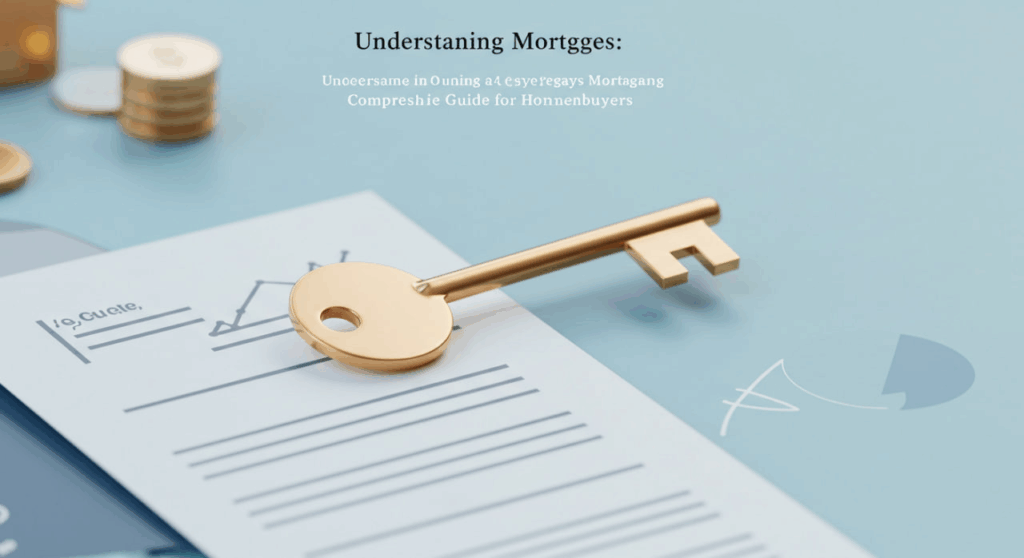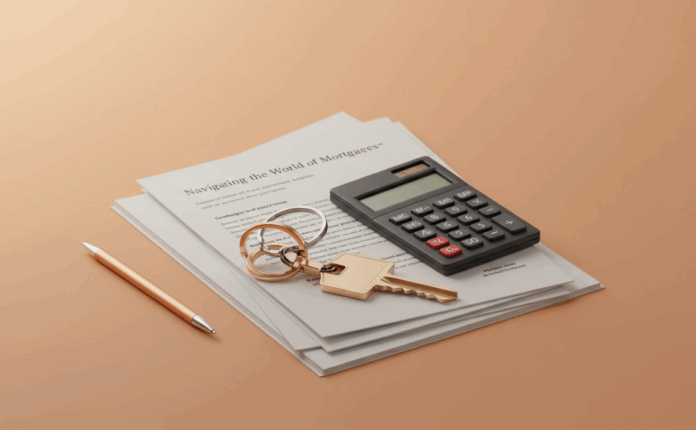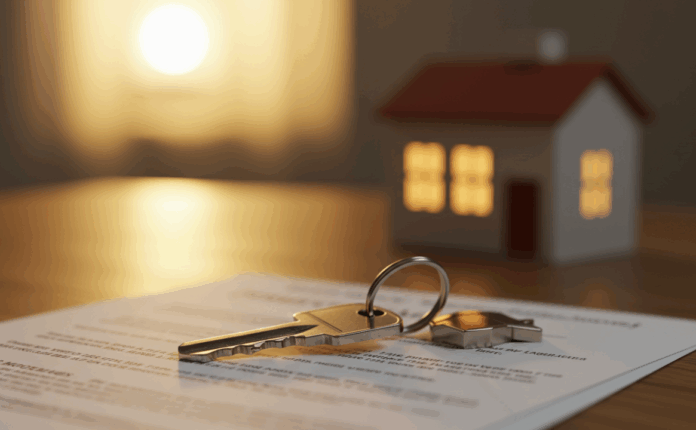Buying a home is one of the biggest financial decisions you’ll make, and for most people, it involves securing a mortgage. A mortgage is essentially a loan specifically designed for purchasing real estate, where the property itself serves as collateral. If you’re new to this or looking to refine your knowledge, this article breaks down the essentials, from basics to advanced considerations, to help you navigate the process confidently.
What Is a Mortgage and How Does It Work?
At its core, a mortgage allows you to borrow money from a lender—typically a bank, credit union, or online financial institution—to buy a home without paying the full price upfront. You repay the loan over time, usually 15 to 30 years, through monthly payments that include principal (the amount borrowed), interest (the lender’s fee), taxes, and insurance (often abbreviated as PITI).
The process starts with a down payment, which is your initial contribution toward the home’s purchase price. Lenders generally require at least 3-20% of the home’s value as a down payment, depending on the loan type. The remaining amount is financed through the mortgage. Over the loan term, you’ll build equity in the home as you pay down the principal, and once the loan is fully repaid, you own the property outright.
Key tip: Always factor in closing costs—fees for appraisals, title searches, and legal work—which can add 2-5% to the home’s price. Budgeting for these upfront can prevent surprises.
Types of Mortgages: Choosing the Right One for You
Not all mortgages are created equal. Understanding the variations can save you thousands in interest and align the loan with your financial goals. Here’s a breakdown of the most common types:
Conventional Mortgages
These are standard loans not backed by the government. They’re ideal if you have good credit (typically 620+ FICO score) and can afford a 20% down payment to avoid private mortgage insurance (PMI). Conventional loans offer flexibility in terms, from 10 to 30 years, and often come with competitive interest rates.
FHA Loans
Backed by the Federal Housing Administration, FHA loans are great for first-time buyers or those with lower credit scores (as low as 580 with a 3.5% down payment). They require mortgage insurance premiums (MIP), but the lower barriers to entry make homeownership more accessible. However, you’ll need to meet income and property standards.

VA Loans
Available to eligible veterans, active-duty service members, and certain spouses, VA loans are guaranteed by the Department of Veterans Affairs. They often require no down payment and no private mortgage insurance, with competitive rates. A funding fee applies, but it can be rolled into the loan.
USDA Loans
Offered by the U.S. Department of Agriculture, these are for buyers in rural or suburban areas meeting income limits. They feature no down payment and low interest rates, but the property must qualify as “rural” per USDA maps.
Adjustable-Rate Mortgages (ARMs)
Unlike fixed-rate mortgages where the interest rate stays constant, ARMs start with a lower introductory rate that adjusts periodically (e.g., every year after 5 years in a 5/1 ARM). They’re suitable if you plan to sell or refinance soon, but beware of potential rate hikes that could increase payments.
Actionable advice: Use online mortgage calculators to compare monthly payments across types. Input your income, down payment, and credit score for personalized estimates.
The Mortgage Application Process: Step-by-Step
Securing a mortgage isn’t instantaneous—it requires preparation. Here’s how to approach it:
- Check Your Credit and Finances: Review your credit report for errors (get a free copy annually from AnnualCreditReport.com). Aim to pay down debts to improve your debt-to-income (DTI) ratio—lenders prefer under 43%.
- Get Pre-Approved: Submit basic financial info to a lender for a pre-approval letter. This shows sellers you’re serious and helps you know your budget.
- Shop for Lenders: Compare rates from at least three lenders. Look at annual percentage rates (APRs), which include fees, for a true cost comparison.
- Submit a Full Application: Provide documents like pay stubs, tax returns, bank statements, and employment verification. The lender will order an appraisal to confirm the home’s value.
- Underwriting and Closing: The lender reviews everything in underwriting (which can take 30-60 days). If approved, you’ll close by signing documents and paying closing costs.
Pro tip: Lock in your interest rate early if rates are rising, but be aware of lock fees or expiration dates.
Factors That Influence Mortgage Rates and Approval
Your mortgage rate—currently averaging around 6-7% for 30-year fixed loans as of mid-2025—depends on several elements:
- Credit Score: Higher scores (700+) unlock lower rates.
- Down Payment: Larger amounts reduce risk for lenders, leading to better terms.
- Loan Term: Shorter terms (e.g., 15 years) have higher monthly payments but lower overall interest.
- Economic Conditions: Rates fluctuate with inflation, Federal Reserve policies, and market demand.
- Debt-to-Income Ratio: Keep it low by minimizing other debts like car loans or credit cards.
If rates seem high, consider buying points—prepaying interest to lower your rate (e.g., 1 point costs 1% of the loan and might reduce the rate by 0.25%).
Pros and Cons of Getting a Mortgage
Advantages
- Builds wealth through equity and potential property appreciation.
- Tax benefits, like deducting mortgage interest on your federal taxes (up to certain limits).
- Fixed payments provide budgeting stability in fixed-rate loans.
Disadvantages
- Long-term commitment with interest costs that can double the loan amount over time.
- Risk of foreclosure if payments are missed.
- Upfront costs and ongoing expenses like maintenance.
Weigh these against renting: Mortgages often make sense if you plan to stay in the home for 5+ years.
Tips for First-Time Homebuyers
- Save Strategically: Aim for an emergency fund covering 3-6 months of expenses before buying.
- Educate Yourself: Attend free homebuyer workshops from HUD-approved counselors.
- Avoid Common Pitfalls: Don’t max out your budget—leave room for unexpected home repairs.
- Refinance Later: If rates drop or your credit improves, refinancing can lower payments.
- Consider Alternatives: If a traditional mortgage doesn’t fit, explore options like co-signers or down payment assistance programs from state housing agencies.
By preparing thoroughly, you can turn the dream of homeownership into reality without unnecessary stress.
FAQ
What is the minimum credit score needed for a mortgage?
It varies by loan type: Conventional loans often require 620+, FHA as low as 580 with a higher down payment, and VA/USDA can be more flexible. Improving your score by paying bills on time can help qualify for better rates.
How much house can I afford?
A good rule is to keep housing costs (mortgage, taxes, insurance) under 28% of your gross monthly income. Use affordability calculators and factor in other debts to avoid overextending.
What’s the difference between pre-qualification and pre-approval?
Pre-qualification is a quick estimate based on self-reported info, while pre-approval involves document verification and a credit check, making it more reliable for sellers.
Can I get a mortgage if I’m self-employed?
Yes, but you’ll need to provide two years of tax returns, profit/loss statements, and possibly client contracts to prove stable income. Expect stricter scrutiny.
How long does the mortgage process take?
From application to closing, it typically takes 45-60 days, but delays can occur due to appraisals or underwriting. Starting early gives you a buffer.
Should I choose a fixed-rate or adjustable-rate mortgage?
Fixed-rate for predictability, especially if you plan to stay long-term. ARMs for short-term stays or if you expect rates to fall, but monitor adjustment caps to avoid payment shocks.
What happens if I miss a mortgage payment?
Contact your lender immediately—many offer forbearance or modification options. Repeated misses can lead to late fees, credit damage, or foreclosure after 120 days of delinquency.
Is refinancing worth it?
If you can lower your rate by at least 0.5-1% and plan to stay 2+ years, yes. Calculate break-even points (closing costs divided by monthly savings) to decide.



